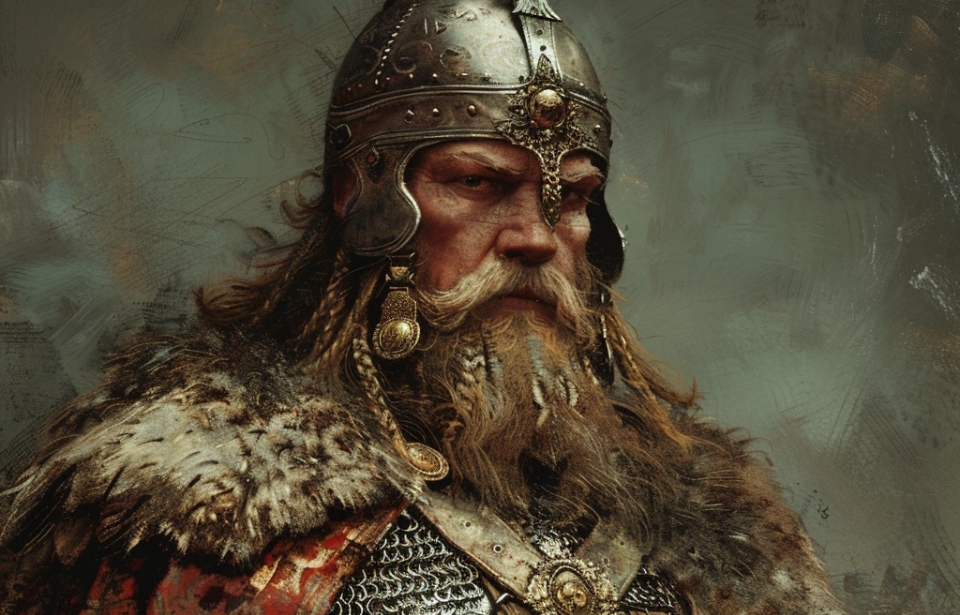Who was Igor I of Kiev?
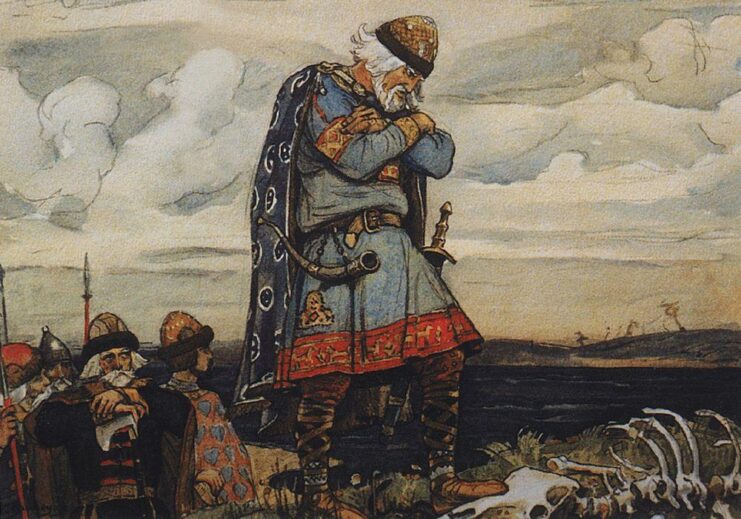
Igor I of Kiev is believed to have been the offspring of the semi-legendary Viking King Rurik. The Primary Chronicle tells us that Rurik was the leader of the Rus’, who took over Ladoga (present-day Russia) and the surrounding territories in 862. That same year, Rurik set up a government in Novgorod (also located in modern-day Russia) and developed the city into a vital settlement.
This renowned Viking king is regarded as the founder of the Rurik Dynasty, which governed the Kievan Rus’ and its successor states. He ruled until his death in 879. On his deathbed, Rurik appointed Oleg the Wise as his successor, while his own son, Igor, was entrusted to Oleg’s care until he was of age.
During his reign, Oleg aimed to expand both territory and influence. Over time, he extended his control along the Dnieper River, eventually capturing the city of Kiev. He declared it the capital of his newly established state, the Kievan Rus’. As Igor matured, he followed Oleg’s guidance. In 913, Igor succeeded his guardian and took on the title of Igor I of Kiev.
Beginning of the Rus’-Byzantine War (941-44)
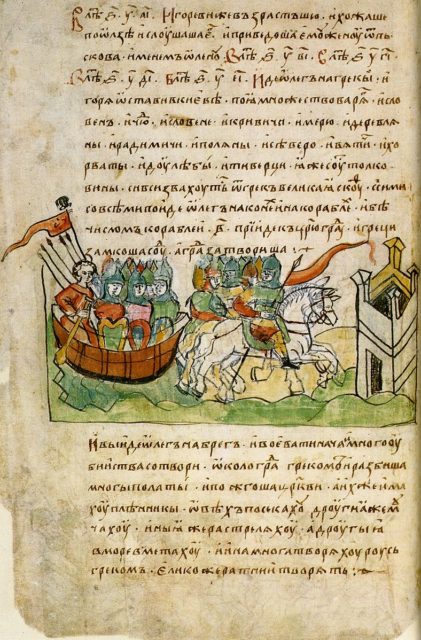
The early years of Igor I of Kiev’s reign are still a puzzle to historians, as the Primary Chronicle focuses on his later life. While there’s a gap in information regarding his early life, the document does a good job laying out the events of his later years.
One major event that took place over the span of three years (941–944) was Igor I’s attempts to besiege Constantinople and the Byzantine people. Before his death, Oleg had managed to achieve peace with the Byzantines through a treaty. However, during Igor I’s rule, something happened to make him rethink this.
In 941, perhaps because Igor I knew the Byzantines were occupied in a conflict with the Arabs in the Mediterranean, he decided to attack the Byzantine capital of Constantinople. He assembled a massive fleet of 1,000 ships and started sailing to Constantinople.
Byzantine Emperor Romanos I Lekapenos got wind of Igor I’s plan to attack and came up with a plan to stop his advancing fleet. The Byzantines had Greek Fire, and while the weapon’s details have been lost to history, accounts of it make it seem similar to a modern-day flamethrower.
The Byzantines attached the Greek Fire to their ships and used it to attack Igor I’s fleet. The results were devastating for the Rus’, as it destroyed many of their ships, and led to many soldiers being either killed or captured.
Igor I of Kiev kept advancing on Constantinople
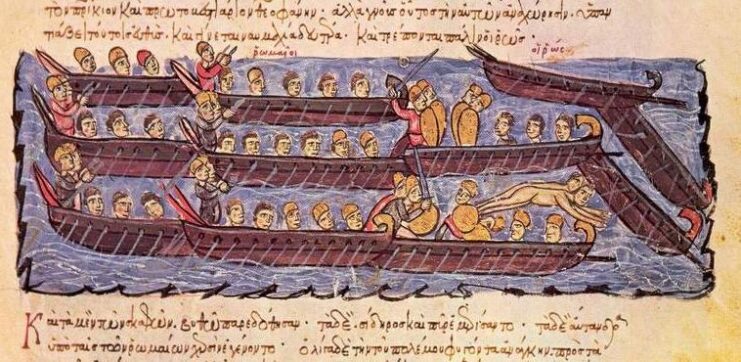
Those who survived the first attack rallied together at the north coast of Asia Minor. There, Igor I of Kiev’s troops recuperated in typical Viking fashion, raiding and pillaging Bithynia and Paphlagonia, east of Constantinople. However, the Byzantines dealt the Rus’ a surprise attack, further damaging the remaining ships.
When Igor I’s soldiers attempted to return to Kiev, they found their passage blocked by the entire Byzantine Navy, which, once again, used Greek Fire to crush them. Igor I managed to escape, but only with a small portion of his original force, while those who were captured were taken to Constantinople and executed.
Upon returning to Kiev, Igor I immediately started recruiting men to, again, attack the Byzantines. Recruiting an force even larger than his first, he launched a renewed assault on Constantinople in 944. This time, his military might included not only warships – a contingent of foot soldiers also moved acrossed land.
When Romanos I Lekapenos heard of this, he intercepted Igor I and offered tribute and trade privileges to the Rus’. The latter accepted the Byzantine offering and returned home to Kiev. Sometime in 945, the empire and Igor I renegotiated the terms of their trade agreements and signed the Rus’–Byzantine Peace Treaty, which ended the Rus’–Byzantine War.
Igor I of Kiev’s untimely death
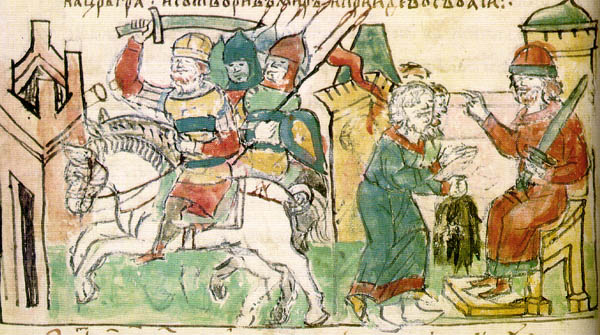
In 945, Igor I of Kiev decided to visit the Drevlians, to collect tribute from them. He collected this by attacking and raiding them. According to the Primary Chronicle, after this initial plunder, Igor I decided he wasn’t satisfied, turned around and went back to the Drevlians in search of more riches.
Upon hearing that he’d turned around, the Drevlians approached their prince about what to do. He advised them to intercept Igor I and ask what he wanted. When they found out he was seeking more tribute, they rose up in revolt.
The Drevlians decided to kill Igor I in a cruel manner, to discourage others from profiting off their land. They bent down two birch trees to his feet and tied them to his legs. They then let the trees straighten again, tearing his body apart.
Aftermath and revolt
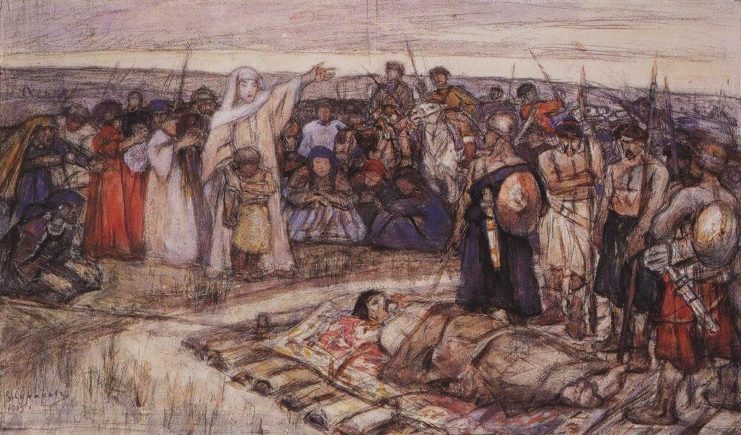
Igor I of Kiev’s story doesn’t necessarily end at his death, for he was avenged by his wife, Olga. She took control of the Rus’ after his passing because their son, Sviatoslav, was only three years old and too young to rule.
After Igor’s death, Drevlian negotiators arrived in Kiev and proposed that Olga marry their prince, Prince Mal. She, however, had these negotiators buried alive in a trench.
After she had them killed, Olga sent a message to the Drevlians, asking them to send their “most distinguished men to her in Kiev, so that she might go to their Prince with due honor.” Unaware of the fates of the first negotiators, they sent more men to Kiev. She then had local residents draw them a bath and burn down the bathhouse.
Olga then decided to go herself to the Drevlians to avenge her husband. After visiting Igor I’s grave, she had 5,000 Devlians killed at the funeral feast held for him. She then went to Iskorosten, where he’d been killed, and burned the city to the ground.
Sviatoslav I
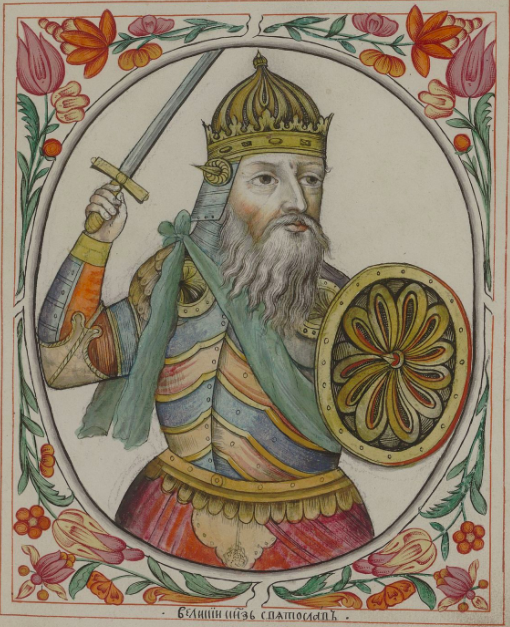
While Igor I of Kiev died while his son was only three, he probably would have been proud of Sviatoslav I’s ambitions as Grand Prince of Kiev. According to the Primary Chronicle, he assumed power around 963, when he reached maturity, and reigned for only a decade. However, during that time, he was very successful, with his rule marked by rapid expansion.
Around 963, shortly after he gained power, Sviatoslav I campaigned to expand Rus’ control over the Volga Valley and the Pontic steppe region. From 963-65, he defeated the Khazars along the lower Don – a huge victory, as Khazaria (located in modern-day Russia and Ukraine) had previously been one of the strongest Eastern European states.
Once he’d conquered Khazaria, he opened the steppe to other nomads. During this time, he also defeated the Ossetes and Circassians in the northern Caucasus, as well as attacked the Volga Bulgars.
In 967, Sviatoslav defeated the Balkan Bulgars to capture Northern Bulgaria. His intentions were to establish a Russo-Bulgarian empire, with its capital at Pereyaslavets, located along the Danube. In 971, however, he was defeated by a Byzantine force and forced to abandon his Balkan territory. While returning to Kiev the following year, he was attacked and killed by the Pechenegs. Following his death, a war of succession broke out between his legitimate sons, resulting in two out of the three being killed.
Historical controversy surrounds Igor I of Kiev’s life
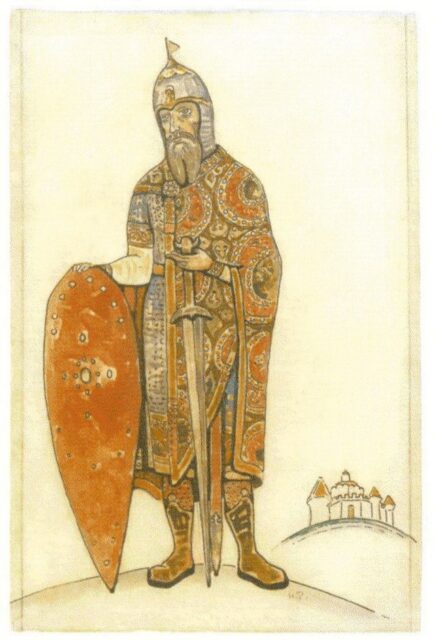
There are many controversial aspects of Igor I of Kiev’s story.
The first issue is with the Primary Chronicle. Many historians don’t accept it as a valid source, having pointed out that it was compiled by different authors centuries after the events written about occurred. As such, they had differing agendas and held different perceptions of the history they were writing about.
The text also had to be translated from the Old East Slavic language, which is a very difficult task and could have led to errors.
There is also controversy around the years that Igor I himself reigned. French historian Constantin Zuckerman, who revised the chronology of the Primary Chronicle, argues he actually only ruled for three years, between the summer of 941 and early ’45. He claims the Primary Chronicle believed Igor I to have had a 33-year reign, due to a misinterpretation of Byzantine sources.
This theory does make sense, as Igor’s political activities don’t appear in the Primary Chronicle until 941.
Depictions of Igor I of Kiev in popular culture
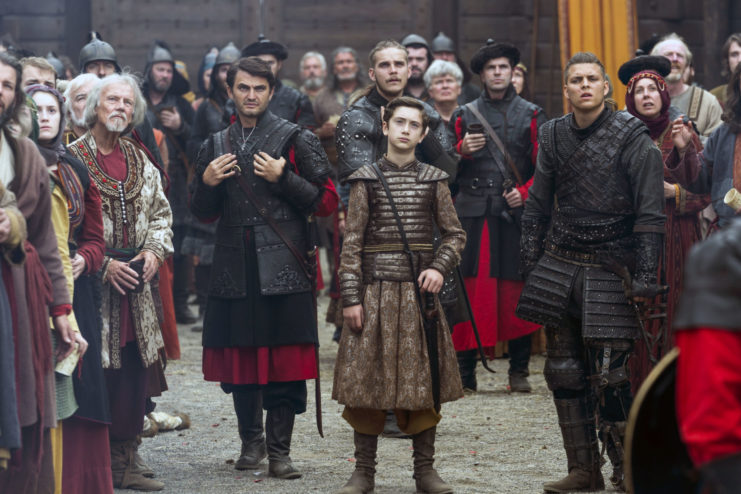
Igor I of Kiev doesn’t have many shout-outs in popular culture, although he was featured in Season six of the popular television series, Vikings (2013-20). That Season covers his life while an adolescent, and he’s portrayed by actor Oran Glynn O’Donovan.
Want to become a trivia master? Sign up for our War History Fact of the Day newsletter!
Oleg is appears and is part of Igor I’s story, just like in actual history. However, the latter’s portrayed as completely terrified of the former. While Igor I might have been afraid of Oleg at times, the Primary Chronicle only says he followed and learned from Oleg.
